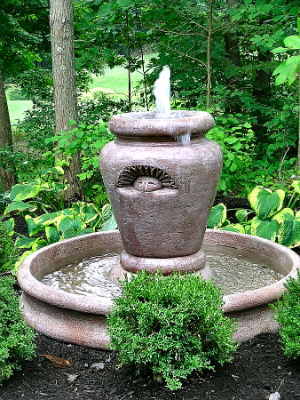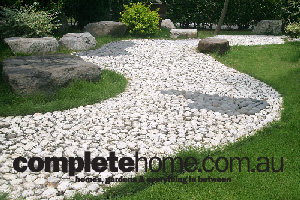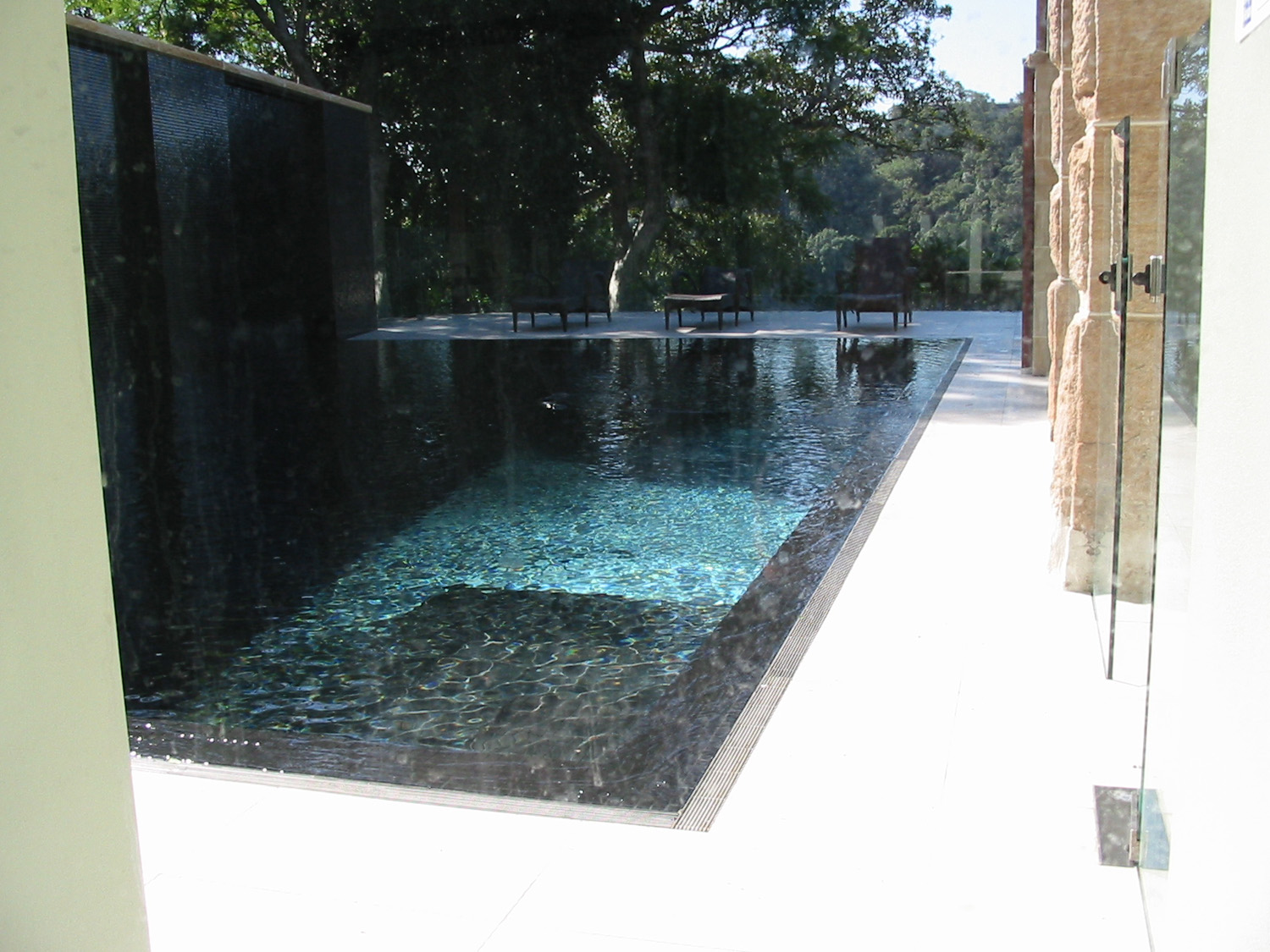
But such pretence can be avoided by going back to basics and taking a more elemental approach, believes Blake. “The use of water should never be too tricky or fussy. Design with one bold concept in mind and do it really well,” he says.
“People seem to think they need to create impact with what the water is travelling over, falling off or falling onto. I feel it is far more important to place emphasis on what is being reflected by the water, or what the water is reflecting onto.
“Water offers many possibilities with the play of light, either as a reflector or as a continuously moving lens. I tend to use water close to large windows, with the aim of making interior ceilings into a canvas for the dancing light created by sunlight on moving water. At night, lighting can be carefully directed through the moving water to animate interior spaces, alfresco ceilings or adjacent tree canopies.
“Alternatively, careful lighting of sculptural branching structures or colourful foliage beyond a plane of still water will cause them to be dramatically mirrored on the surface. Such reflections generate a calm ambience or highlight a set view in a garden.”
According to water feature designer Lachlan Sparrow, from Adelaide-based Water Motion Energy, the push to include water as a garden feature has been driven by homeowners. People are much savvier about their options and are more open to trying something new, he says.
Rachael Devine from Garden Elements in Sydney agrees. “The explosion of home improvement shows on television has significantly contributed to the popularity and increased demand for water features. These shows provide people with inspiration and plenty of accessible, affordable design ideas.
“Australians love water and they love their gardens. By combining both, you can create a tranquil outdoor room that fulfils our other two main loves — entertaining and relaxing.”
Says Lachlan: “The luxury of water is that it can be tailored to suit any environment, from a quiet art piece at a front entrance to a large pond incorporated into a much larger landscape design. And with the increasing availability and affordability of an enormous array of materials, such as stone and glass, the design possibilities for custom-made features — whether for a pool, courtyard or lounge room — seem almost limitless.”
In the realm of the off-the-shelf water feature, the growth in apartment living combined with the increasing numbers of people living in terraces and townhouses, has seen a move towards compact, plug-in water features, says Rachael.
“Popular styles for balconies and small courtyards include GRC/fibreglass sculptural pieces, which create an instant artwork balanced with the harmonious sound of flowing water. Compact and easy to dismantle, water features are also proving popular with those living in rental properties who want something that will be easy to move when they do.”
If you intend to have a water feature that is part of the structure of the landscape itself — perhaps integrated into a courtyard wall or maybe a formal in-ground pond — it’s best to plan early.
“So many water features are constructed almost as a last thought. If working with a landscaper or designer you need to tell them what you want when the initial plans are being drawn up,” says Lachlan. “The feature should be visible from your most frequented areas in and around the home. Sure, a fish pond can quietly sit out the back and mind its own business but a custom-built feature should be something that can be enjoyed with your breakfast coffee in the morning through to your after dinner drinks at night.”
As a water feature is meant to complement its environment, not act as a distraction, you need to consider just how much sound it will generate.
“A person may see a magazine photo of a waterfall coming out of a wall and falling into a pond and want that for their small courtyard. But a magazine doesn’t make any noise! A waterfall might look great but any attempts to have a quiet conversation over lunch would be drowned out by the sound of the tumbling water,” says Lachlan.
Other things to consider include the available space, the height of the water feature, whether you want the collecting pond to be above or below ground, the proximity of a power source (for the pump), the voltage of the pump, how much maintenance will be involved and whether or not you want to have fish or plants in the pond.
Of course, you also need to give some thought as to how the water feature will work in the context of the wider landscape design. Do you want it to be a standout feature or blend into the background?
“Whatever your final selection, the calming and soothing sound of your own, personal water feature creates an instant appeal,” says Lachlan. “In our fast-paced, stressed-out lives a water feature can provide instant relaxation, along with being a point of interest and a beautiful feature of your own home.”




